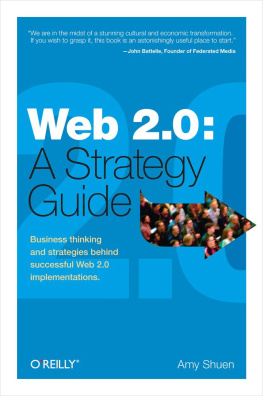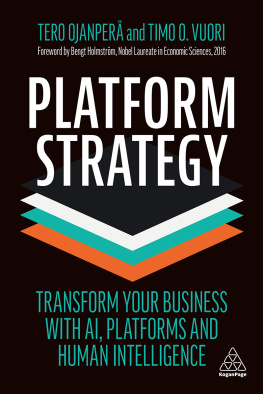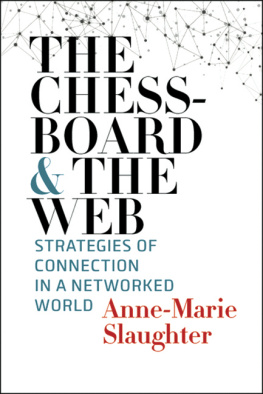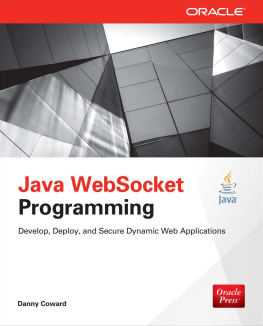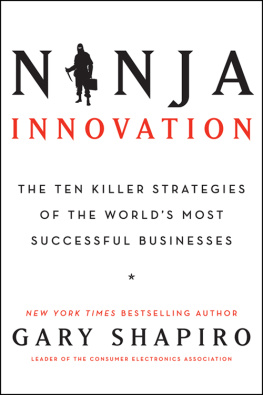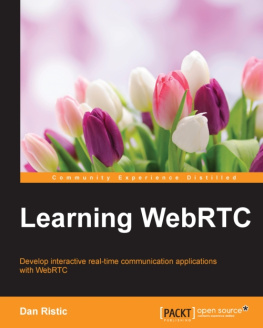Shuen - Web 2.0: a strategy guide
Here you can read online Shuen - Web 2.0: a strategy guide full text of the book (entire story) in english for free. Download pdf and epub, get meaning, cover and reviews about this ebook. City: Farnham England;Sebastopol;CA, year: 2008, publisher: OReilly Media, genre: Business. Description of the work, (preface) as well as reviews are available. Best literature library LitArk.com created for fans of good reading and offers a wide selection of genres:
Romance novel
Science fiction
Adventure
Detective
Science
History
Home and family
Prose
Art
Politics
Computer
Non-fiction
Religion
Business
Children
Humor
Choose a favorite category and find really read worthwhile books. Enjoy immersion in the world of imagination, feel the emotions of the characters or learn something new for yourself, make an fascinating discovery.
Web 2.0: a strategy guide: summary, description and annotation
We offer to read an annotation, description, summary or preface (depends on what the author of the book "Web 2.0: a strategy guide" wrote himself). If you haven't found the necessary information about the book — write in the comments, we will try to find it.
Shuen: author's other books
Who wrote Web 2.0: a strategy guide? Find out the surname, the name of the author of the book and a list of all author's works by series.
Web 2.0: a strategy guide — read online for free the complete book (whole text) full work
Below is the text of the book, divided by pages. System saving the place of the last page read, allows you to conveniently read the book "Web 2.0: a strategy guide" online for free, without having to search again every time where you left off. Put a bookmark, and you can go to the page where you finished reading at any time.
Font size:
Interval:
Bookmark:

Beijing Boston Farnham Sebastopol Tokyo
To my wonderful father and mother for their inspiration, and to my family for their love and encouragement.
In 2004, when OReilly Media, John Battelle, and CMP announced the Web 2.0 Conference (later renamed the Web 2.0 Summit), we had no idea that wed be naming the next big thing in the computer industry. The original premise of the Web 2.0 name was much simpler than that. In 2001, after the dot-com bust, everyone had written off the Web. But at OReilly, we believed deeply that the Web was here to stay, and that it was indeed the next platform. We also noted that all of the companies that had survived the dot-com bustand all of the exciting new startups that were gaining remarkable tractionhad something in common: they understood and exploited the opportunities of the network as a platform, rather than trying to graft old business models onto that platform. We saw Web 2.0 not as a new version of the Web, but rather, as the realization of the Webs potential, its second coming, so to speak. We launched a conference to tell that story, and to reignite excitement in the industry about the transformative power of this technology.
The term Web 2.0 caught everyones imagination, coming at just the right time to capitalize on the rise of Google, mashups, and Ajax. But to us, the term meant far more than just advertising-based business models or new types of web applications. In 2005, I wrote a paper, What Is Web 2.0? , to formalize our ideas about this new platform. I argued that Web 2.0 is ultimately about harnessing network effects and the collective intelligence of users to build applications that literally get better the more people use them. Whats more, I argued that just as the personal computer rewrote the rules of the computer industry in ways that blindsided the giants of that era, so too, would the Internet upend all the power structures and business models of todays industry. Only companies that understood and adapted to the new rules of business would survive and prosper.
Since then, the name Web 2.0 has been widely accepted, and the concepts in that paper, and its predecessor, The Open Source Paradigm Shift have been the basis of many new business plans and development strategies. But with popular acceptance and enthusiasm has come a great deal of misinformation, as marketers have tried to wrap products in the mantle of Web 2.0 whether or not they fit.
It is for this reason that Im excited to see the publication of Amy Shuens Web 2.0: A Strategy Guide . Its the first book that really does justice to my ideas, explaining in plain language the business implications of the Web as a platform. Amy works through a series of practical case studies of Web 2.0 success stories to explain how the underlying principles have been applied to drive each companys growth and profitability.
Theres still a lot to learn. The Web 2.0 revolution continues, and every day, entrepreneurs are finding new ways to apply the principles of Web 2.0. I expect more surprises and new success stories. But for now, this book is the best starting point for any company that wants to understand and apply Internet-era business strategy.
Tim OReilly
Sebastopol, CA
March 2008
YOU ARE ALREADY AN INTEGRAL PART OF THE WEB 2.0 BUSINESS ECONOMY. Every time you click on Google, Wikipedia, eBay, or Amazon, you are sparking network effects. If you use a Flickr-enabled cell phone or tune in to iTunes podcasts or check Yahoo! Finance for stock quotes, you are creating monetizable value for businesseseven if you dont actually buy anything.
Web 2.0 realizes and goes far beyond what Web 1.0 started. It opens tremendous opportunities as business models catch up to the technological possibilities. So many people are connected to and contribute to the Internet now that economies of scale not only lower costs, they create value.
Companies are developing business models that involve creating appealing destinations on the Web where people with shared interests can form communities. When people come together over the Web, their efforts are multiplied rather than simply added together.
Yet whether you are a seasoned business professional or a digital native, the stories about exactly how the new Web 2.0 business models work and make money may seem quite fuzzy, or even downright counterintuitive. The questions are clear:
How is Web 2.0 different from the Web 1.0 dot-com boom and bust?
How does Google offer the worlds knowledge to searchers for free and still make more than $10 billion in revenue,[] grow 68%, and have a stock market valuation of close to $200 billion?
What could possibly make Flickra two-year-old photo-sharing startupworth $40 million to Yahoo!, a video-sharing YouTube worth $1.6 billion to Google, a social networking site called Facebook worth the equivalent of $15 billion to Microsoft?
Is Web 2.0 about corporate blogging, wikis, and podcasting, or something else entirely?
To answer these questions, youll need some analytical toolsnot just buzzwords and hypeto understand how successful Web 2.0 companies do what they do, and the economic mechanisms at work. As you walk through the real-life business stories in this book, youll see how customers can provide value as well as cash. There are lots of ways companies can make money from that value, not just by selling goods and services directly to users. These are network effects, and youll see them in action in almost every case.
A growing number of CEOs and executives from more traditional industries are becoming champions of Web 2.0, with hard numbers to back up their enthusiasm. Yes, Web 2.0 matters for Fortune 100s, big businesses, enterprises, multinationals, and even countries. Don Tapscott, coauthor of the Enterprise 2.0 book, Wikinomics (Portfolio Hardcover), states, Its the biggest change in the organization of the corporation in a century.... In short, Web 2.0 is powering up the knowledge and network economy, starting with users, consumers, and digital natives, and accelerating as it transforms knowledge workers and businesses globally:
Cisco chairman and CEO John Chambers is betting his company on collaboration and Web 2.0The next wave will be about collaboration and Web 2.0...this will drive productivity for the next decade...if you dont understand the power of this collaboration, youll get left behind as a company, as a country.[
A.G. Lafley, CEO of Procter & Gamble, made his consumer product company a Web 2.0 innovation success story by raising new product development success to an astounding 80%, compared to the industry average of 30%. Now more than 35% of the ideas come from outsidevia collaborative web sites, such as InnoCentive, providing access to millions of contributors, not just the 9,000-person research and development staff.[
Enterprises have been ringing our phones off the hook to ask us about Web 2.0, according to Rod Smith, IBMs vice president for emerging Internet technologies.[] IBM has a massive installed base and global Linux and open systems development ecosystem and partnership community, as well as a $50 billion services engine.
Motorola is one of the biggest adopters of web collaboration tools with 4,400 blogs, 4,200 wiki pages, and 2,600 people actively tagging content and social bookmarking, under an initiative called Intranet 2.0. Toby Redshaw, Motorolas vice president in charge of Enterprise 2.0 technologies, says that the company is now more effective at finding people with know-how and expertise: It actually lets people see new relationshipsto see maps of what smart people and like people have done.[
Font size:
Interval:
Bookmark:
Similar books «Web 2.0: a strategy guide»
Look at similar books to Web 2.0: a strategy guide. We have selected literature similar in name and meaning in the hope of providing readers with more options to find new, interesting, not yet read works.
Discussion, reviews of the book Web 2.0: a strategy guide and just readers' own opinions. Leave your comments, write what you think about the work, its meaning or the main characters. Specify what exactly you liked and what you didn't like, and why you think so.

